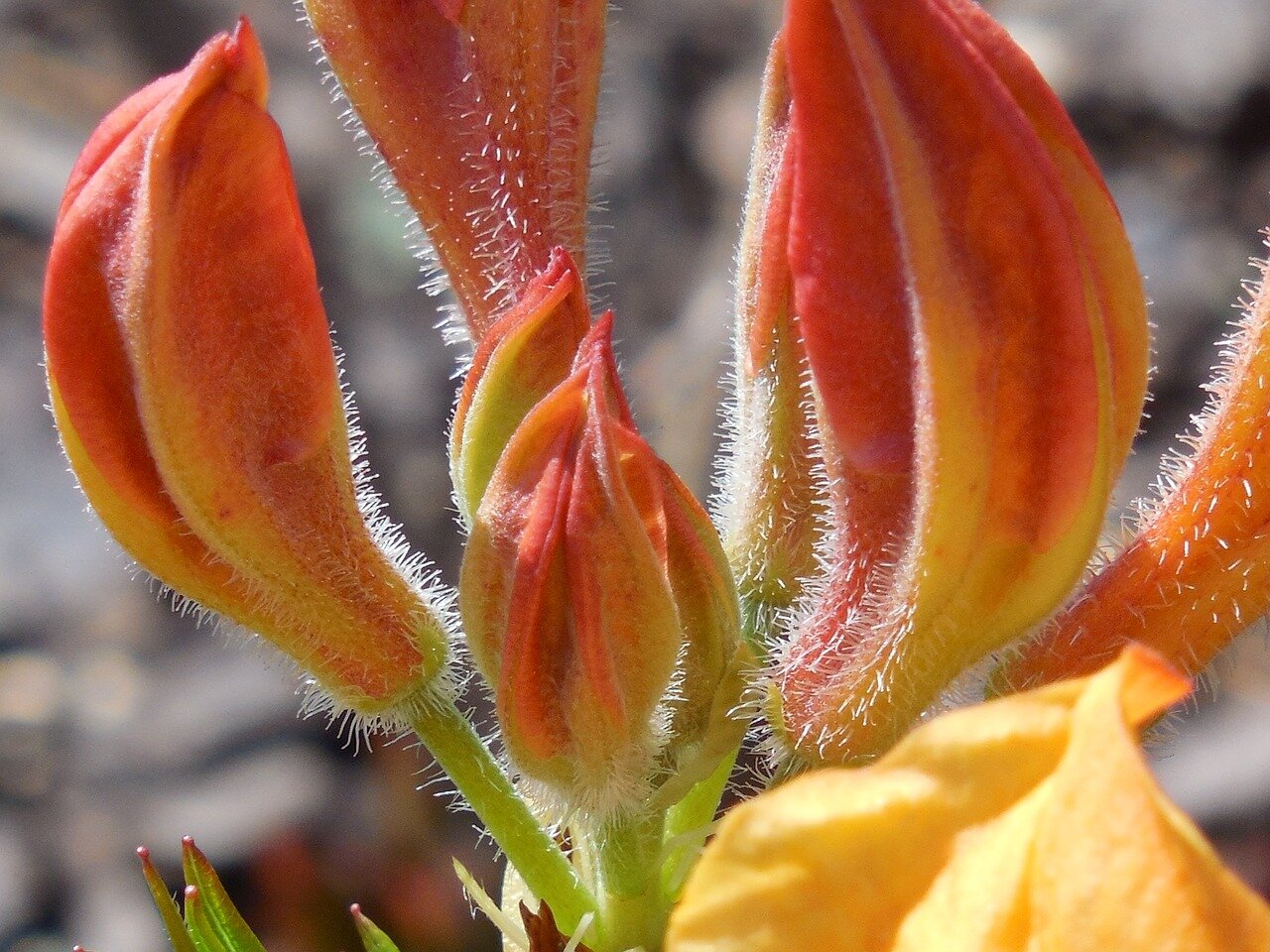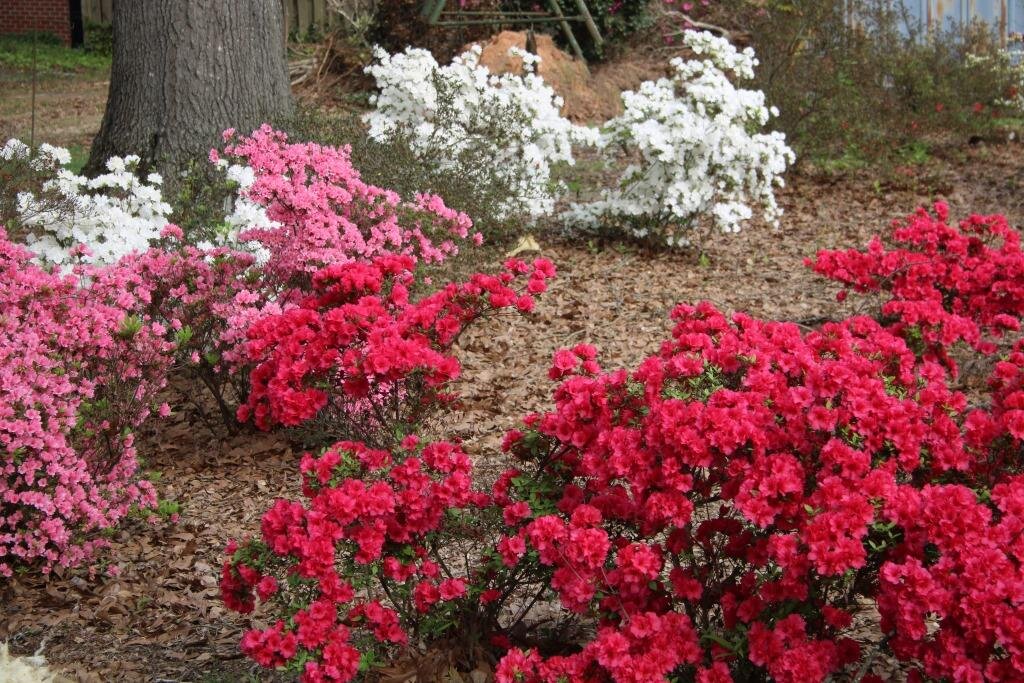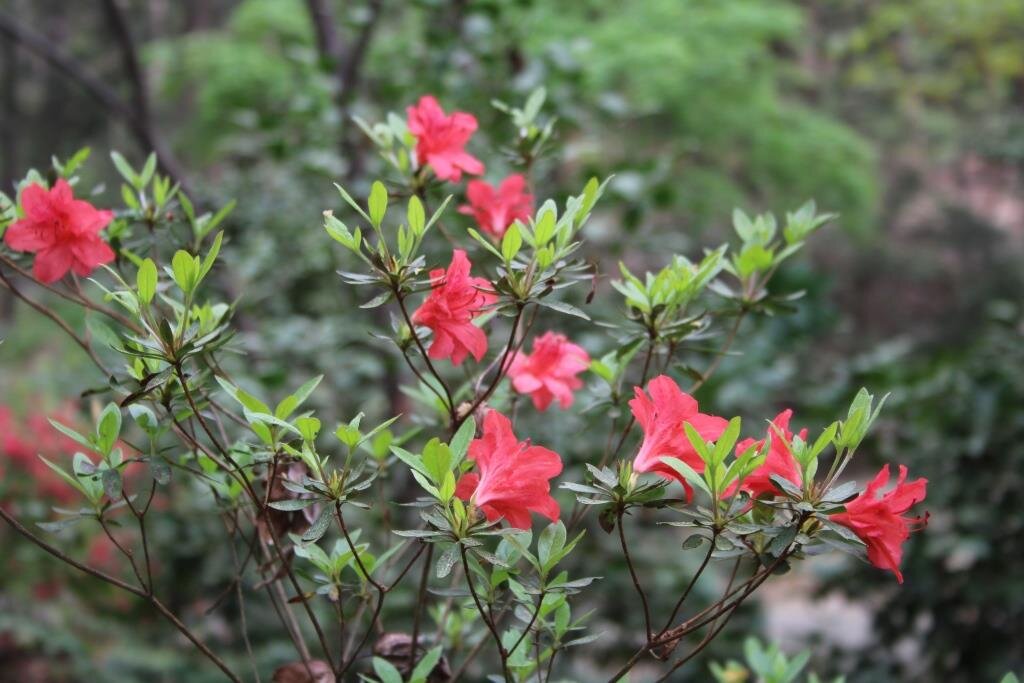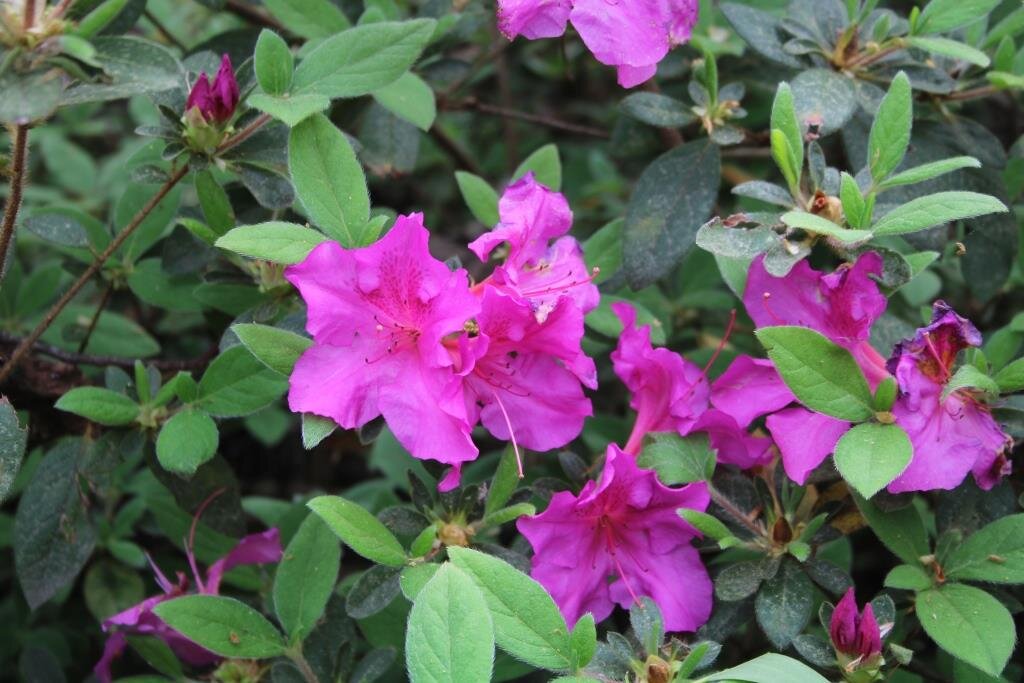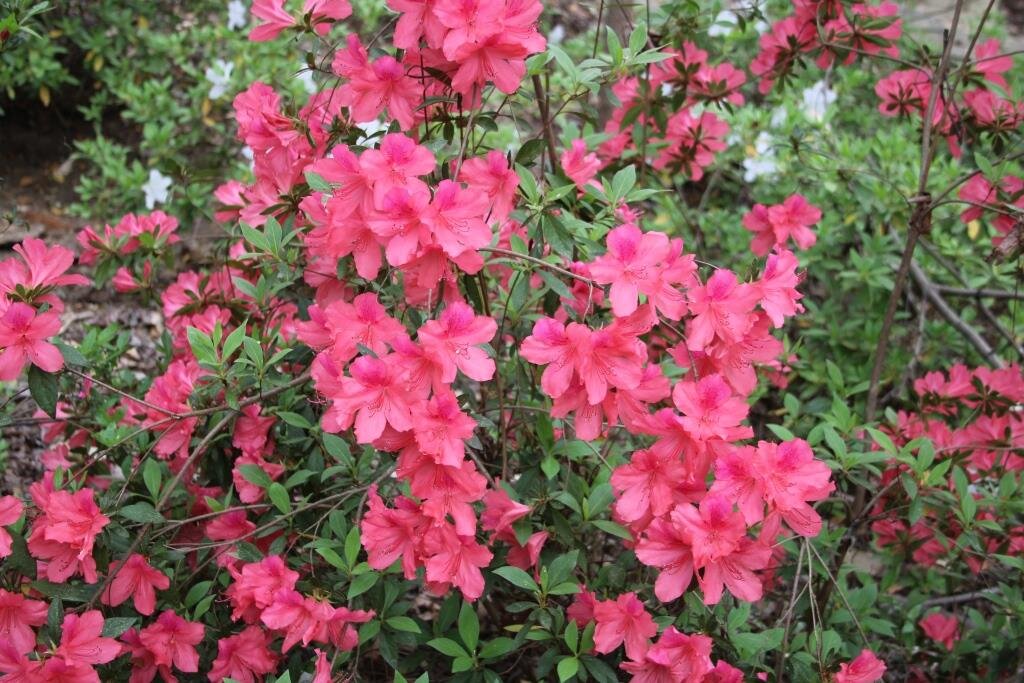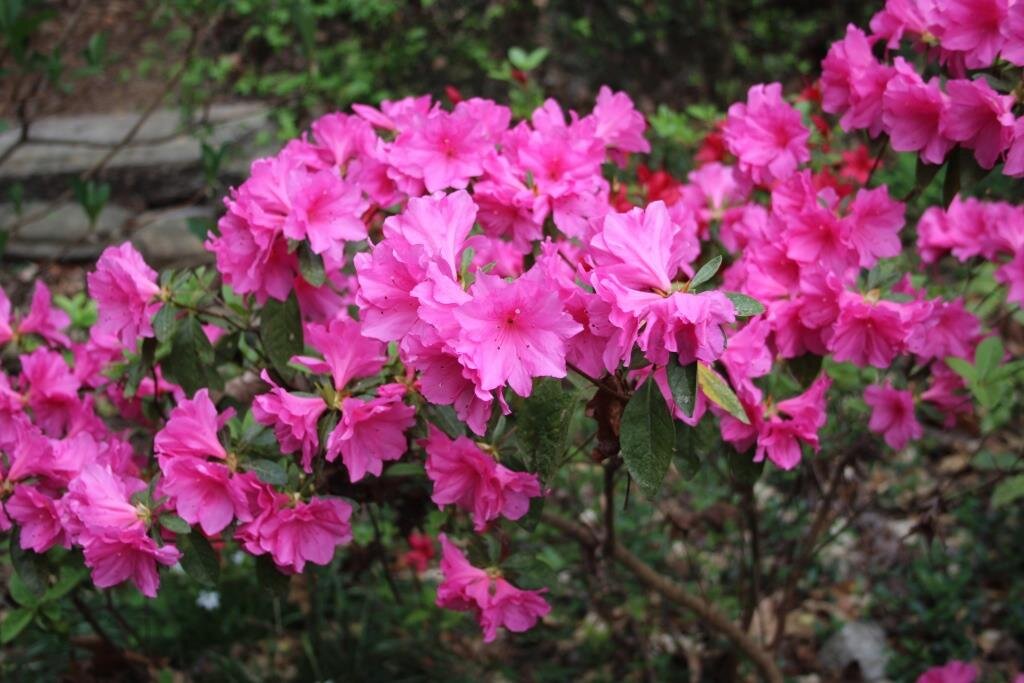Native Azaleas are less in-your-face showy than other members of the Rhododendron family, but they are my favorite. They are native to the US, unlike the popular Popsicle-colored, evergreen Asian Azaleas that are found in many southern landscape plantings.
The Natives are taller and more open than their Asian counterparts. They are deciduous, losing every leaf in winter. In spring, the flowers appear before leaves. The vivid yellow, orange, red or pink blooms glow like torches in the woodland areas where they occur naturally. Given the proper soil (moist, acidic) and light (morning sun, afternoon shade), they perform well in home gardens also. When not in bloom, they fade into obscurity. They look best when incorporated into a natural area rather than jammed against a house foundation. A mature plant may reach 10 to 15 feet, so site accordingly.
There are more than a dozen species of native Azaleas. Many are fragrant. Clemson University has compiled a useful fact sheet, listing species, colors and bloom times. Find a link to their information by clicking here.
According to Alabama and Auburn University Extensions, there are several hybrid groups that are more heat tolerant than most: Aromi hybrids, Auburn series, Confederate series, Sommerville series, Strickland Azaleas, and Clarence Towe’s selections. My friends in the nursery world recommend ‘Admiral Semmes,’ a yellow-flowered shrub in the Confederate series as a strong performer. I cannot distinguish a Piedmont Azalea from a Pinxter Azalea. Both have pale pink flowers with protruding stamens that are beyond gorgeous. Bees, butterflies, and hummingbirds flock to all the native Azaleas. Unfortunately, they are also a deer favorite.
Plants may be propagated from seed or root cuttings. I have experienced failures with both, so will be content to purchase mine from a garden center. Native Azalea is the state wildflower of Georgia.
This ‘Admiral Semmes’ (a Confederate hybrid) is in full bloom, with flower trusses that would rival its showier cousins, the Rhodies.
Pinxter Azalea. Photo by Jerry King, Reidville, SC.
Close view of an ‘Admiral Semmes;’ flower.
The bud of a Flame Azalea inspired its name, since they look a bit like candle flames. This photo Image by Rebecca Matthews from Pixabay




